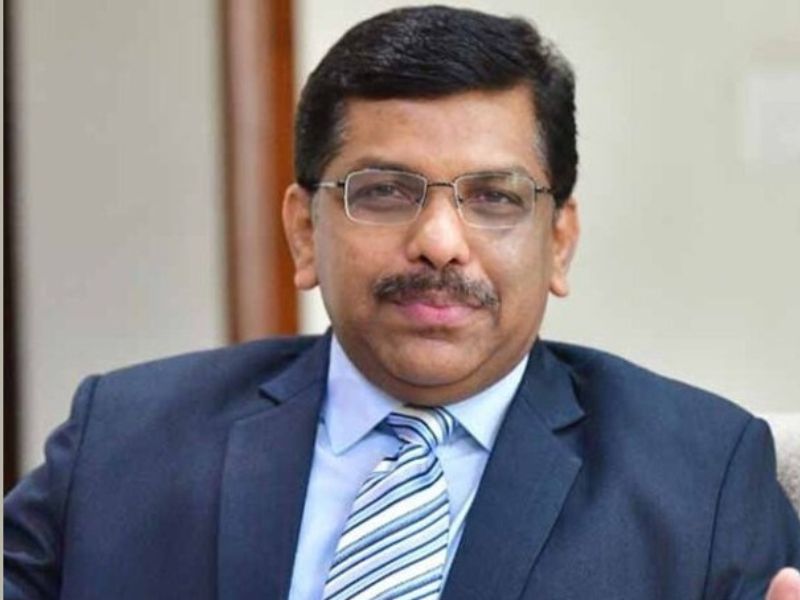Shivanand Pandit, autonomous finance and tax adviser

According to the draft guidelines issued by the regulator of higher education in India, the University Grants Commission (UGC), foreign universities and educational institutions could soon be permitted to establish campuses in India. The UGC issued the draft guidelines for ‘Setting up and Operation of Campuses of Foreign Higher Educational Institutions in India’ and requested a response from stakeholders.
The proposal permits a foreign university amongst the top 500 global rankings or a foreign educational institution of esteem in its home province to apply to the UGC to establish a campus in India. Such a campus can develop its entrance procedure and standards to admit national and international students. It will also have the liberty to determine its fee structure and will face no restrictions that are enforced on Indian institutions. The fee should be reasonable and transparent. It will also have the independence to employ faculty and staff from India and overseas. However, such universities and colleges cannot provide any such curriculum of study which threatens the national interest of India or the values of higher education in India. They will also be permitted cross-border passage of funds.
There have been many actions for bringing in foreign universities in the past, which flopped. In 2010, the UPA-II government brought the Foreign Educational Institutions Bill, which was not approved by the BJP, the Samajwadi Party, and left parties dissented for numerous reasons including concerns about the Western impact on Indian philosophy and spirit.
Breaking the Rules
The National Education Policy (NEP) utters that the top 100 universities in the world will be permitted to function in India by way of a statutory frame. However, the draft guidelines do not obey the manuscript of the NEP. Despite the fact, the NEP talk about forming a statutory structure, the government is following the narrow path. Moreover, the UGC draft allows universities with top 500 international rankings or those deemed esteemed in their home country.
The bigger aim of the NEP is also to take the gross enrolment ratio (GER) in colleges and universities to 50% by 2035 from the present 27%. However, hunting online education and private institutions including foreign institutions will not help those who have no access to education, and only provide additional options to the upper and middle class who have 100% GER.
The NEP’s purpose in endorsing India as a worldwide education terminus is targeted at saving the loss of foreign exchange. After Chinese students, Indians are the biggest group of foreign students in nations like the United States of America, the United Kingdom, and Australia. According to the Ministry of External Affairs, around 13 lakh students were studying in foreign countries in 2022. According to the report by India-based business consulting entity Redseer on higher education abroad assesses that the number of Indian students selecting for higher education abroad increased from 440,000 in 2016, to 770,000 in 2019. That is set to increase to approximately 1.8 million by 2024. As per the Reserve bank of India approximately ₹5 billion was lost in foreign exchange due to students going abroad in the financial year 2021-2022. But then again, the UGC draft rules permit the cross-border passage of funds.
Sweet and Sour Proposal
To a greater extent, the internationalization of Higher Education will surely bring revolution in the education sector. Generally, there are five chief benefits of the internationalization of higher education. Firstly, permitting foreign universities to set up campuses in India would help to globalize higher education. Secondly, owing to tough competition between foreign higher education institutions and Indian institutions, there will be an enrichment in the quality of education and the overall talent pool. Thirdly, numerous reports project the yearly spending on foreign education to be between US$ 13 to 30 billion every year. One report has assessed that Indians would be spending around US$ 80 billion yearly for studies abroad by 2024-2025. The existence of campuses of foreign universities may relieve the trend to move abroad for higher studies. This will help decrease the necessity for foreign exchange. Fourthly, campuses of esteemed foreign higher education institutions will entice foreign students. This will help in the swap of ideas and cultures. It will prove useful to Indian students facilitating them to develop a more all-inclusive mindset with global viewpoints. Lastly, the enrolments in Master of Philosophy (M.Phil.) and Doctor of Philosophy (Ph.D.) courses are quite low. It is expected that campuses of reputed foreign higher education institutions will enhance enrolment in research courses and help develop the ecosystem in India.
Conversely, the globalization of higher education has a dark side too. Firstly, the national safety clause is excessively limiting in nature. Foreign higher education institutions may be unwilling to enter India because it may influence academic autonomy. However, any aggrieved party will have the privilege to approach the Courts. Secondly, previous rules issued by the Government in October 2022 regarding establishing campuses by Foreign Universities in the Gujarat International Finance Tec (GIFT) City like Gandhinagar were exempted from the regulations set by the UGC. Two sets of regulations may result in confusion or misunderstanding. Thirdly, the draft guidelines have not explained specific features that are relevant to Indian Universities such as the academic bank of credits, multiple entries, exit system, up to 40% online delivery along with the issue of reservations in admissions, etc. Fourthly, there are many global rankings like the Quacquarelli Symonds (QS), Times Higher Education, Financial Times Rankings, academic rankings of World Universities (ARWU), etc. The guidelines have not explained which rankings shall be considered for eligibility criteria for the top 500. Fifthly, the rules will also permit institutions of repute in their home nations that are not in the top 500 in the global rankings. Thus ‘repute’ has a subjective clarification and has not been described.
Rocky Road Ahead
The proposal has exposed the government to many challenges. The devil is in the paradoxes contained in the guidelines. Firstly, the affordability of foreign higher education. Foreign higher education institutions may desire to employ foreign faculty, and also, they have freedom in deciding the tuition fee. This may influence affordability, making access to these institutions restricted to the elite. Students from non-wealthy families may have to rely on education loans. Secondly, foreign higher education institutions may be unwilling to procure real estate to set up larger campuses. Acquisition of land is anyway a critical issue in India with many illustrations of prolonged delays and litigations. The Government may have to step in to simplify land acquisition. Thirdly, foreign higher education institutions have to guarantee that the education they teach does not breach India’s national interests including on matters like independence and integrity, public order, decency, morality, etc. Few of the phrases like morality and decency are slanted based on cultural disparities. This may make foreign faculty unenthusiastic to perform on Indian campuses.
Fourthly, higher educational institutions in India are vulnerable to political meddling including on matters of appointments to senior administrative positions. It will need to be guaranteed that foreign higher education institutions do not face such issues in India. Fifthly, the UGC Officials lack the experience and expertise in dealing with foreign higher education institutions. Issues of yearly reviews, campus visits, and other forms of supervision and intervention may pose some challenges. Sixthly, foreign higher education institutions can be for-profit institutions and they will be permitted to deport surplus funds abroad. Indian public higher education institutions are not ‘for-profit’ and have to reinvest the surplus. This will put foreign higher education institutions on a different pedestal than Indian higher education institutions.
To conclude, although the UGC regulations on establishing campuses by foreign universities in India is a welcome move, the real challenge is getting foreign higher education institutions to establish campuses in India. Several such initiatives in the past have failed to achieve desired results. Therefore, only time will tell the success or failure of the UGC initiative in attracting foreign higher education institutions to India. A crucial question that the government should ask itself is whether permitting foreign universities to perform in India will assist in creating secular democracy, along with its components of human rights and social justice? Will that help to bring about the society for which we are waiting? Given India’s demographic, with the population tilted proportionately towards the young, higher education is deeply linked with people’s aspirations and desires. The level of higher education is often a marker of social status and its role in a highly stratified society cannot be underestimated.
The writer is a tax specialist, financial adviser, guest faculty and public speaker based in Goa. He can be reached at [email protected] or 9822983420
























